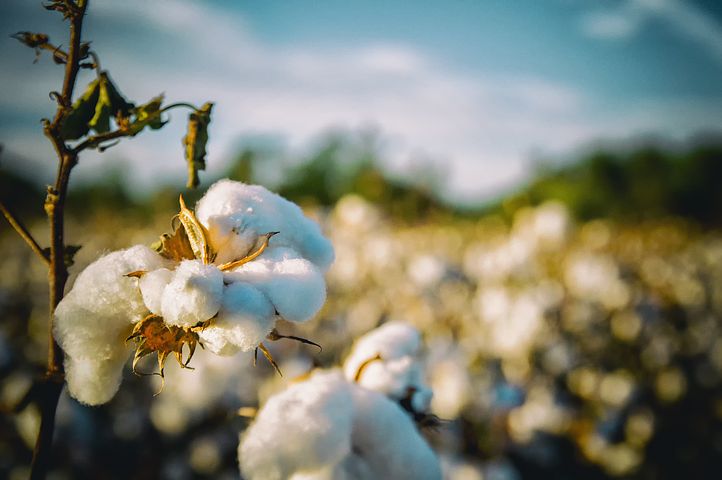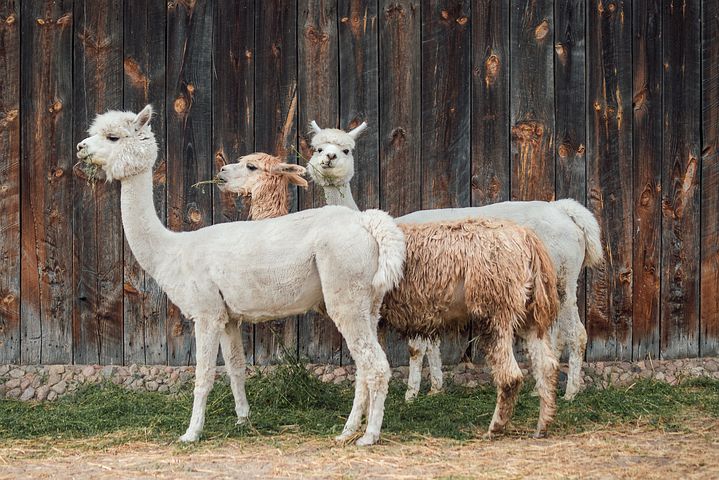5 tips for finding clothes without artificial products
5 TIPS TO FIND CLOTHES WITHOUT ARTIFICIAL PRODUCTS
We live in a world governed by mass industry. An over-consumption effect that also applies to the
fashion sector. Most large companies rely on prices to the detriment of product quality to compete.
To reduce costs, they therefore prefer artificial and synthetic materials. The use of these materials
has a catastrophic effect on the environment and working conditions. The countless chemicals, the
use of dyes, contaminated water for cleaning clothes... So how can we consume more eco-responsibly ?

NATURAL FIBERS
Natural fibres can be vegetable or animal.
In the case of vegetable fibres, cotton is one of them. It is the most widely used natural fibre in the
world.
Flax fibre, whose crops are mainly grown in Europe due to the climate, which has a thermoregulatory
effect in summer.
Jute, hemp, banana and sisal which is extracted from the leaves of the agave.
For animal fibres we find silk, extracted from the silkworm. Leather, which is an animal skin tanned
like cow, lamb, pig, suede, or more recently discovered fish leather.
And to finish off the different types of wool: sheep, angora, mohair, cashmere, llama and our
favourite, alpaca.

ARTIFICIAL AND SYNTHETIC FIBRES
Artificial fibres are made from natural raw materials, chemically treated. It contains viscose or lyocell,
which is obtained from pine, bamboo, soybean or birch bark by a chemical process. And the modal
obtained in the same way by beech wood.
But beware! Bamboo, soya.... does not necessarily mean ecological because we add a huge amount
of chemicals to achieve this result.
Synthetic fibres are mainly derived from the oil industry. It is the result of a chemical reaction
between hydrocarbons or starch, to which colour is added during the process.
And there, the list is growing considerably: Nylon, Polyester, Polyamide, Kévlar, Acrylic, Polyacrylic,
Lycra or Elastane, Lurex... and finally the faux leathers called sky.
Unfortunately, most of the clothes sold on the market are a mixture of synthetic materials and a tiny
part of natural materials.

HOW TO CHOOSE?
Now that you have been briefed on the different subjects, you wonder which one to choose?
1. A natural or artificial material will fall much better on a silhouette than a synthetic material.
2. Look for labelled products. We find the label on the label of the garment which guarantees
compliance with the specifications of the label (environment, work, chemicals...)
3. Buy second-hand! So okay, we're not saying that buying from a clothing store means that
there are no chemicals, but the garment has already been washed several times and above all it
avoids the effect of overconsumption and therefore overproduction.
4. Visit the fairs near you: "Brussels Fashion Days", "We are fashion" in Brussels, "Fair fashion
fest" in Ghent, "M-Fair" in Mechelen... they often guarantee made in Belgium and more eco-
responsible fabrics.
5. Find out about the brand's practices and values before you buy, a quick check on the Internet
to clear or confirm any doubts.
At BellePaga, we obviously prefer natural materials, and we invite you to consult our values
https://bellepaga.com/fr/page/12/nos-valeurs without which we would not be who we are today!
We live in a world governed by mass industry. An over-consumption effect that also applies to the
fashion sector. Most large companies rely on prices to the detriment of product quality to compete.
To reduce costs, they therefore prefer artificial and synthetic materials. The use of these materials
has a catastrophic effect on the environment and working conditions. The countless chemicals, the
use of dyes, contaminated water for cleaning clothes... So how can we consume more eco-responsibly ?

NATURAL FIBERS
Natural fibres can be vegetable or animal.
In the case of vegetable fibres, cotton is one of them. It is the most widely used natural fibre in the
world.
Flax fibre, whose crops are mainly grown in Europe due to the climate, which has a thermoregulatory
effect in summer.
Jute, hemp, banana and sisal which is extracted from the leaves of the agave.
For animal fibres we find silk, extracted from the silkworm. Leather, which is an animal skin tanned
like cow, lamb, pig, suede, or more recently discovered fish leather.
And to finish off the different types of wool: sheep, angora, mohair, cashmere, llama and our
favourite, alpaca.

ARTIFICIAL AND SYNTHETIC FIBRES
Artificial fibres are made from natural raw materials, chemically treated. It contains viscose or lyocell,
which is obtained from pine, bamboo, soybean or birch bark by a chemical process. And the modal
obtained in the same way by beech wood.
But beware! Bamboo, soya.... does not necessarily mean ecological because we add a huge amount
of chemicals to achieve this result.
Synthetic fibres are mainly derived from the oil industry. It is the result of a chemical reaction
between hydrocarbons or starch, to which colour is added during the process.
And there, the list is growing considerably: Nylon, Polyester, Polyamide, Kévlar, Acrylic, Polyacrylic,
Lycra or Elastane, Lurex... and finally the faux leathers called sky.
Unfortunately, most of the clothes sold on the market are a mixture of synthetic materials and a tiny
part of natural materials.

HOW TO CHOOSE?
Now that you have been briefed on the different subjects, you wonder which one to choose?
1. A natural or artificial material will fall much better on a silhouette than a synthetic material.
2. Look for labelled products. We find the label on the label of the garment which guarantees
compliance with the specifications of the label (environment, work, chemicals...)
3. Buy second-hand! So okay, we're not saying that buying from a clothing store means that
there are no chemicals, but the garment has already been washed several times and above all it
avoids the effect of overconsumption and therefore overproduction.
4. Visit the fairs near you: "Brussels Fashion Days", "We are fashion" in Brussels, "Fair fashion
fest" in Ghent, "M-Fair" in Mechelen... they often guarantee made in Belgium and more eco-
responsible fabrics.
5. Find out about the brand's practices and values before you buy, a quick check on the Internet
to clear or confirm any doubts.
At BellePaga, we obviously prefer natural materials, and we invite you to consult our values
https://bellepaga.com/fr/page/12/nos-valeurs without which we would not be who we are today!



